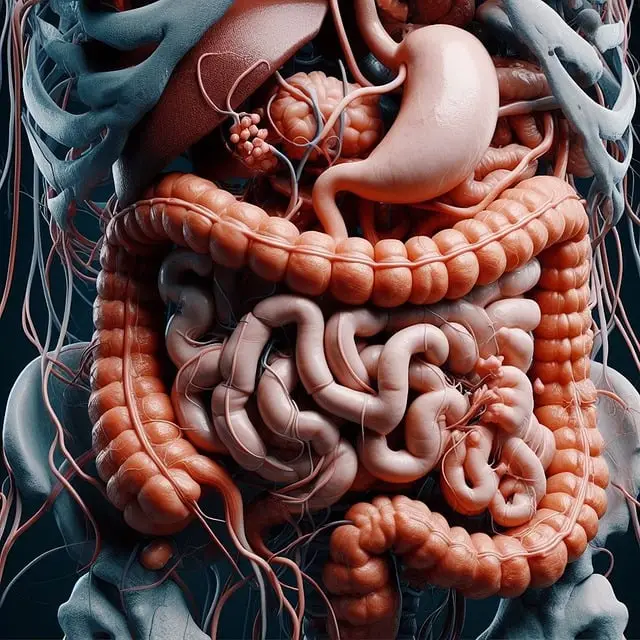Decoding the Rainbow on What Your Poop Color Says About Your Health

If you have a long-term plan for your kids, learn to train them as early as in their childhood developmental stage to accumulate and appreciate nutritive plant-based foods in their weekly healthy diet.
Page Contents
- 1 Introduction:
- 2 The Normal Color of Stool
- 3 Decoding the Rainbow on What Your Poop Color Says About Your Health
- 4 Table 1- What Your Poop Color Says
- 5 Here are some self-help tips for managing mild cases associated with different poop colors:
- 6 20 Digestive Power Packed Fruits
- 7 Here are 20 healthy fruits that can be beneficial for digestive health and may help address concerns associated with different poop colors:
- 8 Conclusion:
Introduction:
For many, discussing bodily functions like poop can feel uncomfortable, but paying attention to its color can provide valuable insights into your health. From vibrant greens to deep reds, the spectrum of colors your stool can take on may indicate various underlying conditions or dietary habits. Let’s delve into the rainbow of poop colors and what they might signify about your well-being.
The Normal Color of Stool
The normal color of stool or poop can greatly vary but generally falls within the shades of brown, owing to the digestion process….It can be due to the diet, hydration and even medications for some who are having ailments maintenance.
However, it is vital to note that the significant changes in color, such as black, white, or red, may indicate underlying health issues and warrant medical attention.

A healthy functioning Digestive Intestine (DI) is a byproduct of what you feed it. Henceforth if you feed it with thrash food then dont be surprised you will eventually keep getting sick and a friend of pharmaceutical sect, BUT if you feed it with healthy plant-based foods then you are its lifetime DI bestfriend.
Decoding the Rainbow on What Your Poop Color Says About Your Health


- Brown: The most common and preferred color of poop is brown. This hue is typically due to bile produced by the liver and broken down by the digestive system. Brown stool indicates a healthy digestive process and is usually nothing to worry about.
- Green: Green poop might alarm you, but it’s often harmless and can be attributed to your diet. Consuming leafy greens, green food coloring, or even a rapid transit time through your digestive tract can result in greenish stools. However, if it persists or is accompanied by other symptoms, it’s worth consulting a healthcare professional.
- Yellow: Yellow poop can indicate excess fat in the stool, which may be due to a malabsorption disorder like celiac disease or gallbladder issues. It can also result from consuming foods high in yellow food coloring. If your stool consistently appears yellow and you experience other symptoms like abdominal pain or bloating, seek medical advice.
- Red: Seeing red in the toilet bowl can be alarming, as it may suggest bleeding somewhere in the digestive tract. Red poop can result from consuming red-colored foods like beets or tomatoes, but it can also indicate more serious conditions such as hemorrhoids, diverticulosis, or gastrointestinal bleeding. If you notice persistent red stools, especially if they’re dark or tarry, it’s crucial to consult a doctor promptly.
- Black: Black or tarry stools often indicate the presence of digested blood, known as melena. This can result from bleeding in the upper gastrointestinal tract, such as in the stomach or esophagus. Causes may include ulcers, gastritis, or even certain medications like iron supplements. Black stool warrants immediate medical attention to determine the underlying cause and appropriate treatment.
- White or Clay-Colored: Stools that are white or clay-colored may suggest a lack of bile in the stool, potentially indicating a bile duct obstruction or liver problem. This absence of pigment can result from conditions like hepatitis, cirrhosis, or gallstones. If your stool consistently appears pale, consult a healthcare professional for further evaluation.
Table 1- What Your Poop Color Says
| Color | Possible Causes | When to Consult a Doctor |
|---|---|---|
| Brown | Healthy digestion process, bile breakdown | – |
| Light Brown | Normal | – |
| Dark Brown | Possible bleeding in the upper digestive tract | If persists for more than a few days |
| Green | Leafy greens, food coloring, rapid transit time | If persists or accompanied by symptoms |
| Yellow | Excess fat, malabsorption disorders, food coloring | If persists or accompanied by symptoms |
| Light Yellow | Normal | – |
| Dark Yellow | Possible liver or gallbladder issues | If persists for more than a few days |
| Red | Consumption of red foods, bleeding in digestive tract | Promptly, especially if dark or tarry |
| Light Red | Normal | – |
| Dark Red | Possible gastrointestinal bleeding | Immediately for evaluation and treatment |
| Black | Digested blood, gastrointestinal bleeding | Immediately for evaluation and treatment |
| White/Clay | Lack of bile, bile duct obstruction, liver issues | Consult a healthcare professional for further testing |
Here are some self-help tips for managing mild cases associated with different poop colors:
- Brown (Dark Brown):
- Stay hydrated by drinking plenty of water.
- Increase fiber intake through fruits, vegetables, and whole grains to promote regular bowel movements and prevent constipation.
- Avoid foods and beverages that may irritate the digestive system, such as spicy foods, caffeine, and alcohol.
- Green:
- Monitor your diet and reduce intake of green-colored foods or food coloring if they seem to be causing the issue.
- Increase intake of probiotic-rich foods like yogurt or consider taking probiotic supplements to promote gut health.
- Stay hydrated and maintain a balanced diet to support healthy digestion.
- Yellow (Dark Yellow):
- Reduce intake of fatty or greasy foods that may exacerbate digestive issues.
- Eat smaller, more frequent meals to ease the workload on the digestive system.
- Consider incorporating foods that support liver health, such as leafy greens, beets, and cruciferous vegetables.
- Red (Dark Red):
- Avoid consuming large amounts of red-colored foods like beets or tomatoes if they contribute to red stool.
- Maintain good hygiene practices to prevent irritation or bleeding from hemorrhoids.
- Monitor for any recurrence of red stool and seek medical advice promptly if it persists or worsens.
- Black:
- Evaluate your medication use and discuss any concerns about potential side effects with your healthcare provider.
- Avoid consuming iron supplements unless prescribed by a doctor.
- Incorporate foods rich in vitamin C, which can enhance iron absorption and reduce the risk of constipation.
- White/Clay:
- Opt for a low-fat diet to reduce stress on the liver and bile ducts.
- Avoid consuming alcohol and limit intake of processed or fatty foods.
- Practice good hygiene habits and ensure proper handwashing to prevent infections that may exacerbate liver or bile duct issues.
While these self-help tips may alleviate mild symptoms associated with various poop colors, it’s essential to consult a healthcare professional for proper diagnosis and treatment if symptoms persist or worsen. They can provide personalized recommendations based on your specific condition and medical history.


20 Digestive Power Packed Fruits

Here are 20 healthy fruits that can be beneficial for digestive health and may help address concerns associated with different poop colors:
- Apples: Rich in soluble fiber, apples can help regulate bowel movements and promote overall digestive health.
- Bananas: High in potassium and pectin, bananas are easy to digest and can help alleviate diarrhea and promote regularity.
- Berries (e.g., strawberries, blueberries, raspberries): Packed with antioxidants and fiber, berries support gut health and may aid in relieving constipation.
- Papaya: Contains an enzyme called papain, which aids digestion and may help alleviate symptoms of indigestion and bloating.
- Kiwi: Loaded with fiber and vitamin C, kiwi can help support digestive regularity and may reduce symptoms of constipation.
- Pears: High in fiber and sorbitol, pears can help soften stools and promote bowel movements.
- Oranges: Rich in vitamin C and fiber, oranges support digestive health and may help relieve constipation.
- Mango: Contains digestive enzymes like amylases and proteases, which aid in breaking down carbohydrates and proteins, respectively.
- Pineapple: Contains bromelain, an enzyme that aids in digestion and may help reduce symptoms of indigestion and bloating.
- Grapes: Rich in fiber and antioxidants, grapes support digestive health and may help alleviate symptoms of constipation.
- Plums: High in fiber and sorbitol, plums can help soften stools and promote regular bowel movements.
- Watermelon and Mash Melon: Contains high water content and fiber, which can help hydrate the body and support digestive regularity.
- Guava: Rich in dietary fiber and vitamin C, guava supports digestive health and may aid in relieving constipation.
- Peaches: High in fiber and vitamins, peaches support digestive regularity and may help alleviate symptoms of constipation.
- Cherries: Packed with antioxidants and fiber, cherries support gut health and may aid in relieving symptoms of constipation.
- Avocado: Rich in fiber, healthy fats, and potassium, avocado supports digestive health and may aid in relieving constipation.
- Cantaloupe: High in water content and fiber, cantaloupe promotes hydration and supports digestive regularity.
- Pomegranate: Packed with antioxidants and fiber, pomegranate supports gut health and may help reduce inflammation in the digestive tract.
- Passion Fruit: Contains fiber and antioxidants that support digestive health and may aid in relieving constipation.
- Apricot: High in fiber and vitamins, apricot supports digestive regularity and provides essential nutrients.
Incorporating a variety of the fruits and veggies into your diet can contribute to overall digestive health and may help address concerns associated with different poop colors. Remember to consume fruits as part of a balanced diet and consult a healthcare professional if you have specific digestive concerns.
Conclusion:
While it’s natural to feel uneasy discussing the color of your poop, paying attention to changes can offer valuable insights into your health. While many variations in stool color are harmless and transient, some may indicate underlying health issues that require attention. By understanding the rainbow of poop colors and their potential implications, you can take proactive steps to maintain your digestive health and overall well-being. Remember, if you have concerns about the color or consistency of your stool, don’t hesitate to seek guidance from a healthcare provider.






